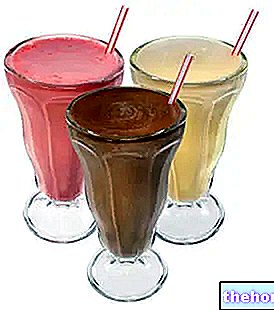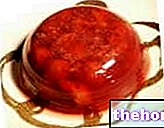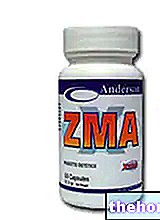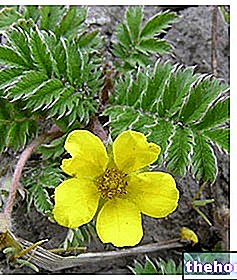Generality
Chitosan derives from the deacetylation of chitin, a polymer that protects crustaceans and insects by giving hardness and resistance to shells and armor.

In the industrial field, Chitosan is produced and used to purify marine waters, exploiting its ability to attract oily compounds such as petroleum. This interesting feature makes Chitosan a particularly interesting substance also in the medical field.
Although our body is unable to digest this fiber, its ability to absorb fats by promoting their elimination with the stool could be used in the formulation of many products intended for people who are overweight or with high levels of triglycerides and cholesterol in the blood. .

Chitosan: Chemical Structure
Indications
Why is Chitosan used? What is it for?
Chitosan seems to be effective in reducing intestinal absorption of cholesterol and triglycerides, thus carrying out an important metabolic and preventive role.
For this reason, Chitosan supplements are actively used in the prevention of dysmetabolism and atherosclerotic consequences.
According to some evidence, Chitosan could also prove useful to patients with chronic renal failure, contributing to the reduction of blood concentrations of urea and creatinine.
The slimming, anti-cancer and digestive activities do not seem to be particularly relevant.
The clinical action of Chitosan would be traced back to its particular pharmacokinetic characteristics. Chitosan would in fact seem to reach the intestinal environment still intact, thus being able to exert a chelating action against the aforementioned metabolites, mediating their elimination through the faeces.
Properties and Effectiveness
What benefits has chitosan shown during the studies?
The activity of Chitosan is widely described in the literature, both by experimental studies and by very interesting clinical trials.
Chitosan and lipid metabolism
Recent clinical trials have demonstrated the usefulness of Chitosan in modulating lipid metabolism.
From a "careful examination of the literature:
- Chitosan would exert an "inhibitory action against" the absorption of triglycerides, guaranteeing a reduction in the blood concentrations of these elements;
- Chitosan would also guarantee an appreciable reduction in blood concentrations of LDL cholesterol;
- Chitosan would allow better control of the size of the atheromatous plaque, as observed in small rodents.
Chitosan and kidney failure
Chitosan has also shown important advantages in renal pathologies.
According to some authors, the addition of Chitosan to a balanced diet in renal patients would have:
- Determined a reduction in blood urea concentrations;
- Determined a reduction in blood concentrations of creatinine;
- Increased the feeling of appetite;
- Improved muscle strength;
- Improved night rest.
Chitosan and body weight
Although the use of Chitosan is advertised as a possible slimming remedy, the clinical studies currently published, conducted on both men and obese women, have not unequivocally confirmed this type of benefit. The leading experts in the field consider this effect to be null or particularly modest.
Dosage and method of use
How to use Chitosan?
There are many chitosan-based supplements on the market.
Classically, the metabolic activity of Chitosan would seem to be carried out for a daily dosage of 1,000-1,200 mg, taken immediately before meals with a glass of water.
Side effects
The use of Chitosan has sometimes determined the appearance of side effects such as nausea and diarrhea, which quickly regressed once the intake was discontinued.
Contraindications
When should Chitosan not be used?
The use of Chitosan is contraindicated in patients hypersensitive to the active principle or allergic to shellfish.
Pharmacological interactions
What drugs or foods can modify the effect of Chitosan?
Chitosan could bind in the intestinal lumen different active ingredients of a lipophilic nature, as well as fat-soluble vitamins such as vitamins A, D, E, K, antioxidants such as carotenoids and flavonoids, and some minerals such as zinc.
This link could reduce the bioavailability of the aforementioned elements.
It is therefore recommended to avoid the simultaneous intake of Chitosan and multivitamin supplements or drugs.
On the contrary, the contextual intake of Vitamin C and hydroxycitric acid, contained in the Garcinia cambogia, it would seem to enhance the beneficial activity of Chitosan.
Precautions for use
What do you need to know before taking Chitosan?
The use of Chitosan should be avoided during pregnancy and in the subsequent breastfeeding period.
Shellfish allergy patients should avoid the use of chitosan-based supplements.
The use of Chitosan, in the presence of overt pathological states, should be supervised by the doctor.
Select plant Fir Acacia Acerola Sorrel Yarrow Yarrow Yarrow Aconito Adatoda Garlic Agnocasto Agrimonia Alchemilla Alkekengi Aloe Altea Witch Hazel Ammi or Visnaga Pineapple Andrographis Anemone Pulsatilla Angelica Anise Star Anise Japanese Star Anise Bitter Orange Bitter Areca Arnica Harpagophytum Arpagophyte Artemisia Asteragus Basil Asparagus Asparagus Peruvian Asparagus Asparagus Asparagus Hawthorn Boldo Borage Shepherd's Purse Boswellia Bucco Butea superba Cocoa Coffee Cajeput Calamus Calamus Marigold Camedrio Chamomile Roman Chamomile Camphor Cinnamon Ceylon Maidenhair Capuchin Artichoke Cardamom Cardiac Thistle Asian Thistle Carvi Cascara Cassia Catecu Catha Cabbage Celandine Chicory Centaurea Cinnamon Cypress Celandine Chives Cypress Coca Cola Colchico Combreto Condurango Comfrey Coriander Cranberry Barberry American Chrysanthemum Cumin Turmeric Damiana Digital Dioscorea Drosera Dulcamara Dunalilella Echinacea Eder a Ephedra Elenio Eleutherococcus Helichrysum Evening primrose Horsetail Alfalfa Erica Euphrasia Erisimo Escolzia Eucalyptus Farfara Farfaraccio Calabar bean Fenugreek Fennel Phytolacca Frangola Ash Fumaria Japanese Mushrooms Galega Ganoderma lucidum Garcinia Cambogia Mulberry Gentian Broom Ginkgo Ginkgo Guipana Guipana Gynestra Ginkgo Hibelia Gymnasium Hibiscus Guarulp St. John's Wort Horse Chestnut Ispaghul Hyssop Jaborandi Kava kava Konjac Laminaria Cherry Laurel Lavender Lemongrass Lespedeza Lovage Icelandic Lichen Lemon Flax Lippia Licorice Lobelia Hops Maca Marjoram Maize Mallow Manna Marrubio Marrubio d "water Matè Melaleuca Meliloto American Lemon balm Myrtle Myrama Walnut Nutmeg Walnut vomica Olive tree Meadowsweet Ononide Opuntia Oregano Orthosiphon Nettle Poppy Papaya Parietaria Feverfew Passiflora Chilli Perilla Periwinkle Phyllanthus Plantain Picrorhiza Pilosella Pino Pisci dia Podofillo Polygala Grapefruit Parsley Psyllium Pueraria mirifica Butcher's broom Pygeum Quassia Oak Rhubarb Ratania Rauwolfia currant Castor bean Rhodiola Rosehip Rosemary Rue Willow Sarsaparilla Sage Elderberry Sassafras Sedum Ergot Senna Serenoa Repens Soybean Solidago Tansy Taraxus Tamarind Tamarind Tamarind Tamarind Tamarindo Ursina Valerian Vanilla Mullein Verbena Veronica Viburnum Vinca Pansy Mistletoe Vine Withania Yohimbe Saffron Ginger Pumpkin Select disease Juvenile Acne Rosacea Tinnitus Tinnitus Aerophagia Tendon Affections Afonia Aphthae Algias Functional Halitosis Breastfeeding Allergy Anemia Anguish Anxiety Arteriosclerosis Asthrosis Asthrosis Arthritis Arthritis Men Sex Woman Blepharitis and Conjunctivitis Eye bags Bronchitis Gallstones Kidney stones Salivary stones Baldness Androgenetic Candida Fragile hair Caries Headache Cellulitis Motion sickness Cystitis C limaterio Cholecystopathy High cholesterol Ulcerative colitis Colonoscopy Contusions Hematoma Convalescence Couperose Depression Dermatitis Diaper dermatitis Diabetes Diarrhea Erectile dysfunction Dyslipidemia Dysmenorrhea Dyspepsia Disturbances of vision Hemorrhoids Epistaxis Herethism Heart disease Fever Fibromyalgia Gastro-intestinal disease Flatulence Hypertension Fibromyalgia Gastrointomnia Jaundice Laryngitis Renal lithiasis Toothache Sore throat Thinness Menopause Meteorism Mononucleosis Alzheimer's disease Crohn's disease Nausea Vomiting Obesity Dark circles Onychomycosis Osteoporosis Dry skin Periarthritis Piorea Low pressure Prostatitis Psoriasis Colds Breast fissures Anal fissures Gastro-nasal rhinitis Senescence Premenstrual Syndrome Sinusitis Quit smoking Overweight Fatty liver Constipation Stomatitis Stress Cough Triglycerides high Ulcer Burns Nails Brittle flashes Heat Warts Dizziness Properties herbal Tanning Abortive adaptogenic Aphrodisiac bittering analgesic anesthetic anorectics analgesic antacid anti-allergic anti-asthmatic Antibiotic catarrh Anticellulitiche anticonvulsant Antidiaforetiche antidiarrheal edematous anthelmintic antiemetic Antiemorroidarie antiphlogistic Antiidrotiche Antinevrotiche Antioxidants antipyretic antirheumatic antiscorbutic Antiseptic antispasmodic anti-uric Aperitive Flavoring Astringent Balsamic Bechiche Capillarotrope Cardiotonic Carminative Cathartic Caustics Healing Cholagogues Choleretic Dyes Decongestants Deodorants Purifying Diaphoretic Cleansers Disinfectants Detoxifiers Thirst quenching Diuretics Exciting Emetics Emmenagogues Emollients Hemostatic Energies Hepatoprotectors Expectorants Eupepticus Moisturisers Galactosensitizers lanti Hypertensive Hypnotic Hypoglycemic Hypotensive Irritants Laxatives Soothing Narcotic Nerves Nutrients Odontalgic Pectoral Purgative Revulsive Remineralizing Refreshing Rubefacient Scialagoghe Sedative Soporifugas Sneezing Stomachic Stomatics Narcotic Vascular Tightenitis









.jpg)


















